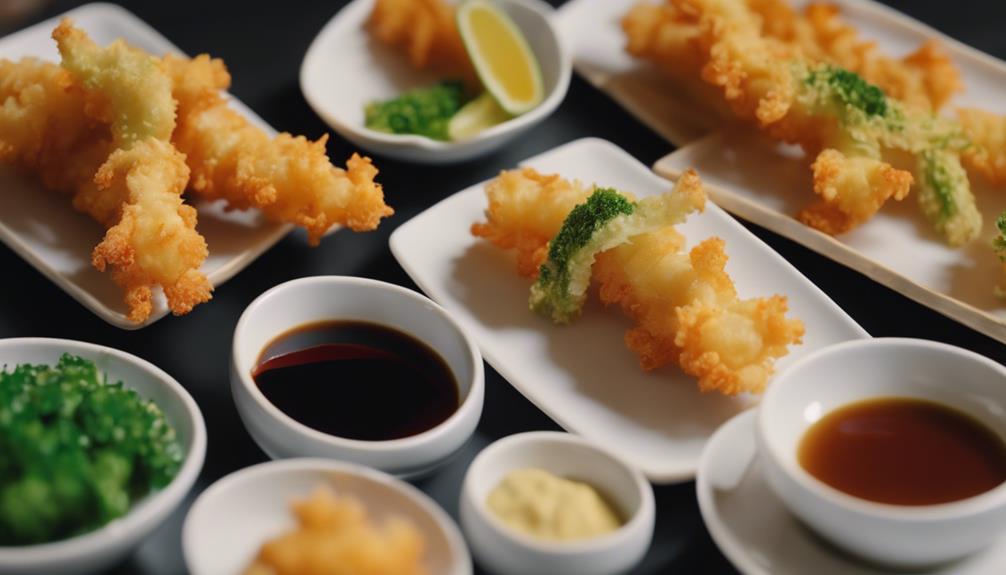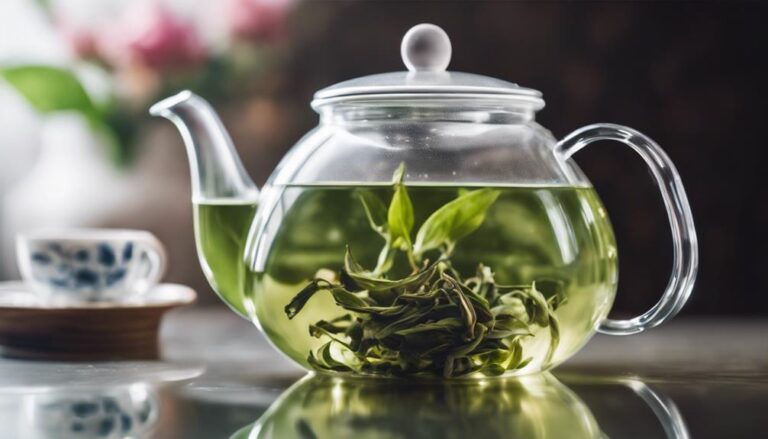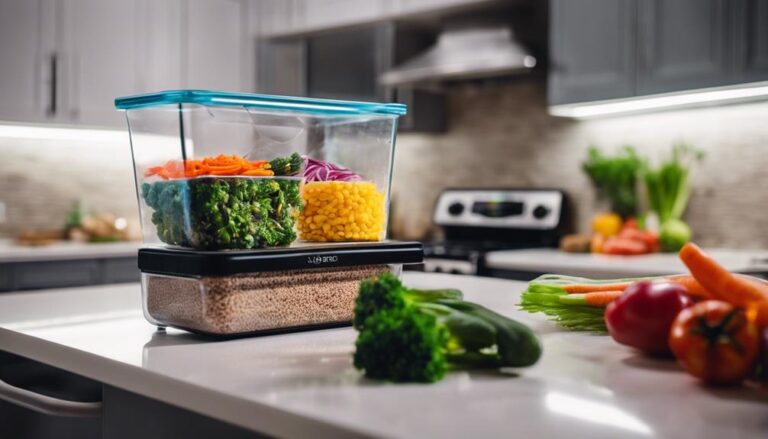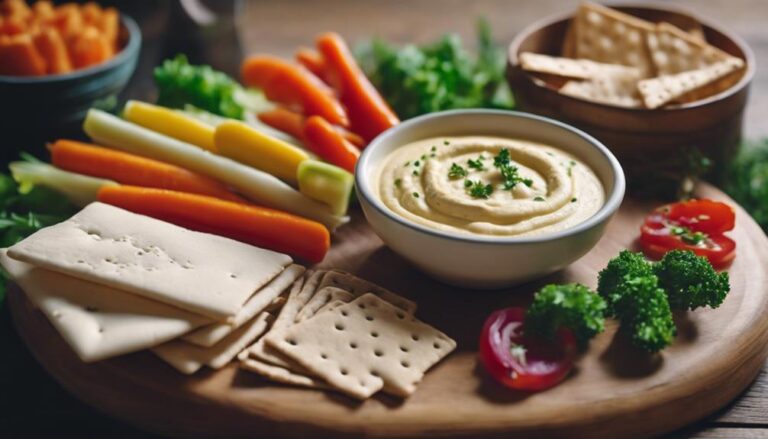Sous Vide Vegetable Tempura With Soy Dipping Sauce
Enter the world of culinary artistry by creating a tasty Sous Vide Vegetable Tempura with a luxurious soy dipping sauce. Embrace contemporary techniques to achieve delectable results. Elevate every crunchy bite with the savory-rich essence of the soy sauce. Encounter the ideal combination of textures and flavors in this exquisite dish. Discover the mysteries of sous vide cooking for a delightful variation on classic tempura that will have you yearning for more.
What You Will Learn Here
- Sous vide cooking method ensures precise temperature control for perfectly cooked vegetables.
- Tempura batter adds a crispy texture to sous vide vegetables.
- Soy dipping sauce complements the umami flavors of the tempura vegetables.
- Combination of modern sous vide technique and traditional tempura creates a unique dish.
- Elevate the dish by serving with a side of pickled ginger for added flavor contrast.
Origin of Tempura Dish
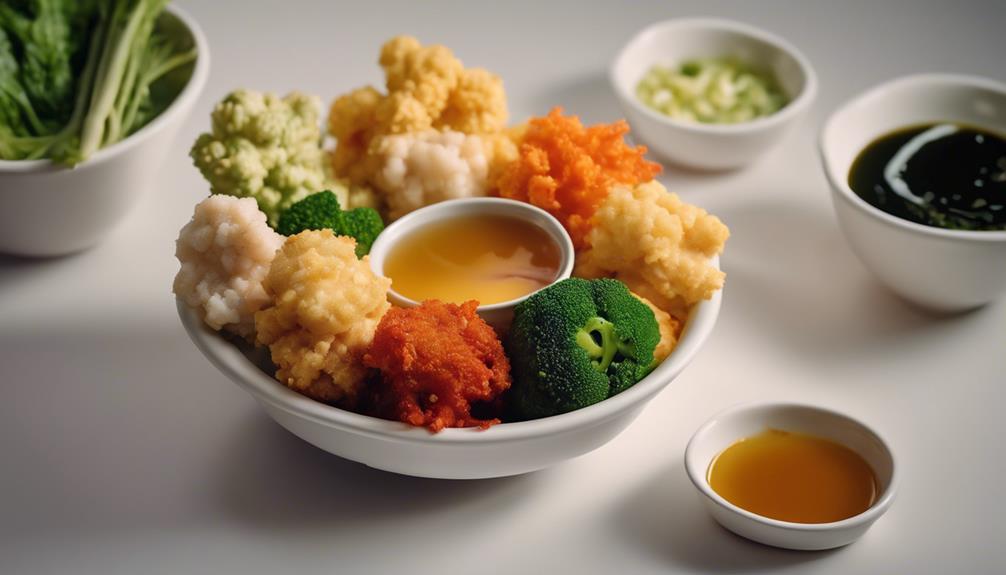
The origins of the tempura dish trace back to the 16th century when it was introduced to Japan by Portuguese missionaries and traders.
The word 'tempura' finds its roots in the Latin phrase 'quatuor tempora,' which translates to 'Ember Days.'
This crispy and light dish has become a significant part of Japanese culinary culture, known for its delicate battering and deep-frying technique.
Tempura Dish History
Originating from the introduction of Portuguese culinary influences in the 16th century, the Japanese dish of tempura has a fascinating history intertwined with cultural exchange and culinary evolution.
The word 'tempura' is derived from 'tempora,' a Latin term linked to Catholic fasting customs. Initially, tempura consisted solely of seafood, but it gradually incorporated various vegetables. The signature light and crispy texture of tempura batter is achieved by combining flour, ice-cold water, and sometimes egg.
During the Edo period, tempura gained popularity in Japan and has since spread worldwide in different variations. This dish showcases the harmonious blend of Portuguese and Japanese culinary traditions, making it a delightful and versatile recipe enjoyed by many.
Tempura Cooking Technique
Exploring the traditional technique behind tempura cooking reveals a rich history of culinary fusion and delicate craftsmanship. Tempura, a Japanese cooking method, involves batter-frying seafood or vegetables to create a light and crispy coating.
The term 'tempura' is said to have originated from Portuguese missionaries in the 16th century. The batter, typically made of flour, water, and sometimes egg, is essential to achieving the signature delicate and airy texture of tempura.
To master the art of tempura, it's vital to maintain the oil temperature and fry the ingredients quickly. This technique guarantees that the dish retains its crispiness.
Tempura is often served as an appetizer or side dish in Japanese cuisine, paired perfectly with a classic soy sauce dipping sauce.
Tempura Cultural Significance
With its roots tracing back to the 16th century and a blend of culinary traditions, tempura has become a celebrated dish in Japanese cuisine. Tempura, originating from Portuguese influence, combines the concept of batter-frying with Japanese ingredients, resulting in a unique and delicious culinary experience.
The word 'tempura' itself has ties to Catholic traditions, specifically the period of abstinence known as the Ember Days. Initially featuring seafood, tempura has evolved to include a variety of vegetables like sweet potatoes, bell peppers, and zucchini. The technique of achieving the light and crispy texture involves using a cold batter and quick frying in hot oil.
Tempura is commonly served as a standalone dish or as an accompaniment to other Japanese meals such as soba noodles or rice bowls, often paired with a flavorful dipping sauce.
Tempura Batter Ingredients
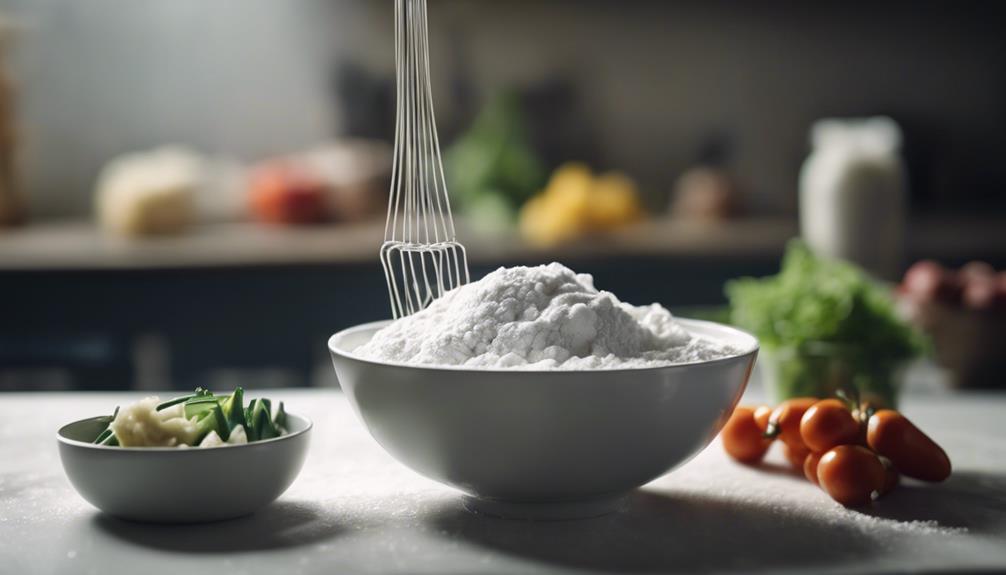
To create the perfect tempura batter for your sous vide vegetable tempura, combine flour, cornstarch, baking powder, and ice-cold water in a mixing bowl.
Here are some key points to keep in mind when preparing your tempura batter:
- Flour and Cornstarch: The combination of flour and cornstarch helps create a light and airy texture in the batter, resulting in a delicate coating for your vegetables.
- Baking Powder: Adding baking powder to the batter gives it a bit of leavening, contributing to the crispiness of the final tempura coating.
- Ice-Cold Water: Using ice-cold water is essential as it helps maintain the batter's cold temperature, which is vital for achieving a crispy and light texture when the tempura-coated vegetables are fried.
Tasty Tempura Variations
When it comes to tasty tempura variations, you have a world of options to explore. Try out a crispy zucchini tempura for a fresh take on this classic dish.
If you're feeling adventurous, why not experiment with a zesty sweet potato tempura or whip up a unique tempura dipping sauce to elevate your culinary experience?
Crispy Zucchini Tempura Recipe
For a scrumptious twist on traditional tempura, explore the world of crispy zucchini tempura, a delightful dish that highlights the mild flavor and tender texture of zucchini slices encased in a light, airy batter and fried to golden perfection.
Here are some key points to ponder when making crispy zucchini tempura:
- Light Batter: The tempura batter for zucchini is typically a delicate mixture of flour, cornstarch, baking powder, and ice-cold water, ensuring a crispy and airy texture.
- Frying Tips: To achieve the perfect crispiness, maintain the oil temperature while frying and avoid overcrowding the pan for even cooking.
- Serving Suggestions: Zucchini tempura pairs wonderfully with soy dipping sauce or other condiments, enhancing the contrast between the crispy exterior and the tender zucchini inside.
Zesty Sweet Potato Tempura
Delight your taste buds with the vibrant flavors of zesty sweet potato tempura, a delectable twist on traditional tempura known for its unique texture and rich taste profile.
Sweet Potato: The star ingredient in this tempura variation, sweet potatoes add a hint of sweetness and a delightful contrast in texture.
Flavorful Twist: Zesty sweet potato tempura offers a unique take on the traditional dish, infusing it with rich flavors and vibrant colors.
Dipping Sauce Recipe: Pair this crispy sweet potato tempura with a tangy soy-based dipping sauce for a perfect balance of flavors.
Enjoy the versatility of sweet potato tempura as a snack, appetizer, or side dish, and savor the delicious combination of sweet and savory notes in every bite.
Unique Tempura Dipping Sauce
A variety of unique tempura dipping sauces offer a diverse range of flavors and ingredients to elevate your tempura experience.
- Spicy Mayo: A creamy and zesty sauce that adds a kick of heat to complement the crispy tempura coating.
- Ponzu Sauce: A tangy and invigorating option that brings a rejuvenating twist to traditional tempura dishes.
- Citrus-Infused Sauce: A light and fruity recipe using citrus fruits like yuzu or lemon to enhance the flavors of the tempura vegetables.
These dipping sauces are carefully crafted to provide a perfect balance of savory, sweet, and umami notes, resulting in a delightful harmony with the light and crispy texture of tempura vegetables. Experimenting with different sauces can enrich your culinary journey and take your tempura game to the next level.
Tempura Frying Techniques
To achieve the perfect tempura fry, you must master temperature control, ensuring the oil stays between 340-360°F.
The batter plays a pivotal role in creating that sought-after crispiness, so aim for a light and airy consistency.
Selecting the right oil and maintaining it well, along with frying in small batches, are key techniques for achieving that delightful crunch.
Temperature Control for Frying
For achieving the desired crispiness in your vegetable tempura, keeping the oil temperature between 340-360°F is essential to guarantee consistent browning and texture. Utilizing a thermometer ensures precise temperature control throughout the frying process.
Sudden fluctuations in oil temperature can lead to soggy tempura, emphasizing the necessity of maintaining a stable heat range. Consistency in oil temperature not only results in uniform browning but also preserves the delicate flavors of the vegetables.
Battering Techniques for Crispiness
Using ice-cold water in your vegetable tempura batter is crucial for achieving a crispy texture while avoiding gluten development that can result in toughness. When mixing the batter, aim for a light touch to prevent overmixing, which can activate the gluten in the flour. This delicate balance guarantees a light and crispy coating for your vegetables.
To further enhance the crispiness, consider coating the vegetables lightly in flour before dipping them in the batter. Additionally, frying in small batches is essential for maintaining the oil temperature and preventing overcrowding, which can lead to soggy tempura.
Oil Selection and Maintenance
When selecting oil for frying tempura, opt for varieties with high smoke points such as canola, vegetable, or peanut oil to achieve the desired crispy and light texture.
Maintaining the oil temperature between 350-375°F is vital for ensuring the perfect crispiness of your tempura.
To prevent off-flavors or burning, it's important to monitor the quality of the oil throughout the frying process.
After each use, remember to filter the oil to remove any food particles that could affect its quality.
Proper oil maintenance also involves storing it in a cool, dark place away from heat sources to extend its shelf life and preserve its frying properties.
Final Thoughts
To conclude, the creative Sous Vide Vegetable Tempura recipe offers a delightful fusion of traditional flavors and modern cooking techniques, elevating the culinary experience to new heights. This dish isn't only an inventive take on the classic tempura but also a display of precision and innovation in the kitchen.
Whether you're looking to impress guests at a dinner party or add a unique dish to your menu at a Japanese restaurant, this Sous Vide Vegetable Tempura with Soy Dipping Sauce is sure to captivate with its crispy texture and rich umami flavor. The careful balance of flavors and textures in this recipe makes it a standout choice for those seeking to explore new culinary horizons.
Frequently Asked Questions
Can You Eat Tempura With Soy Sauce?
Yes, you can enjoy tempura with soy sauce, one of the best dipping sauces. It enhances the flavors of the crispy fried vegetables, providing a savory and satisfying experience. Additionally, soy sauce offers health benefits like antioxidants and essential amino acids.
Do You Need to Pre Cook Vegetables for Tempura?
You don't need to pre-cook vegetables for tempura. The vegetable preparation and tempura coating, combined with proper frying, create a crispy texture. Trust the batter and technique to work their magic, ensuring your tempura turns out perfect.
Why Is My Tempura Batter Not Crispy?
To achieve crispy tempura, make sure your oil is at 350-375°F and maintain proper batter consistency. Avoid excess water and overmixing. Fry in small batches to prevent oil temperature drop. Fresh oil and adequate spacing are vital for crispiness.
What Is the Secret to Perfect Tempura?
To achieve perfect tempura, guarantee a crispy coating by using ice-cold water in the batter. Maintain oil temperature at 340-360°F for lightness. Briefly mix the batter to prevent gluten formation. Fry in small batches for even cooking, and drain on a rack for crispiness.
Conclusion
To sum up, sous vide vegetable tempura with soy dipping sauce offers a unique twist on a classic dish, combining the precision of sous vide cooking with the crispy texture of tempura.
The delicate balance of flavors and textures in this dish is sure to impress even the most discerning palate.
Whether enjoyed as an appetizer or a main course, this dish is a delightful treat for any food enthusiast looking to elevate their culinary experience.
